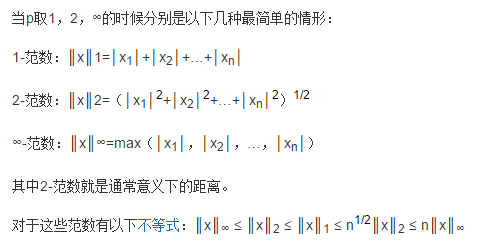原文:http://caffe.berkeleyvision.org/tutorial/layers.html
参考:http://blog.csdn.net/u011762313/article/details/47361571#vision-layers
记:总感觉对于caffe是一知半解,要深入深度学习,以及更好的去工程和实验,详细学习caffe是必须的。
Layers
- 要想创建一个Caffe模型,需要在prototxt中定义一个model architecture(模型架构)。
- Caffe自带的Layer及其参数被定义在中。
Vision Layers
------------------------------------------------------------------------------------------------------------------------------------------------------------------------------------------------------------------
- 头文件: ./include/caffe/vision_layers.hpp
Vision layers 通常以图片images作为输入,运算后产生输出的也是图片images。对于图片而言,可能是单通道的(c=1),例如灰度图,或者三通道的 (c=3),例如RGB图。但是,对于Vision layers而言,最重要的特性是输入的spatial structure(空间结构)。2D的几何形状有助于输入处理,大部分的Vision layers工作是对于输入图片中的某一个区域做一个特定的处理,产生一个相应的输出。与此相反,其他大部分的layers会忽略输入的空间结构,而只是 将输入视为一个很大的向量,维度为: c*h*w。
Convolution
-
-
- 类型(type):Convolution(卷积层)
- CPU 实现: ./src/caffe/layers/convolution_layer.cpp
- CUDA、GPU实现: ./src/caffe/layers/convolution_layer.cu
- 参数 (convolution_param):
- 必要:
- num_output (c_o): the number of filters(滤波器数目)
- kernel_size (or kernel_h and kernel_w): specifies height and width of each filter(每一个滤波器的大小)
- 强烈推荐:
- weight_filler [default type: ‘constant’ value: 0](滤波器权重,默认为0)
-
可选:
- bias_term [default true]: specifies whether to learn and apply a set of additive biases to the filter outputs(是否添加bias-偏置项,默认为True)
- pad (or pad_h and pad_w) [default 0]: specifies the number of pixels to (implicitly) add to each side of the input(为输入添加边界的像素大小,默认为0)
- stride (or stride_h and stride_w) [default 1]: specifies the intervals at which to apply the filters to the input(每一次使用滤波器处理输入图片时,前后两次处理区域的间隔,即“步进”,默认为1)
- group (g) [default 1]: If g > 1, we restrict the connectivity of each filter to a subset of the input. Specifically, the input and output channels are separated into g groups, and the ith output group channels will be only connected to the ith input group channels.(默认为1,如果大于1:将限制每一个滤波器只与输入的一部分连接。输入、输出通道会被分隔为不同的g个groups,并且第i个输出 group只会与第i个输出group相关)
-
输入(Input)
- n * c_i * h_i * w_i
- 输出(Output)
-
n * c_o * h_o * w_o,其中h_o = (h_i + 2 * pad_h - kernel_h) / stride_h + 1;w_o类似
-
例子(详见 ./examples/imagenet/imagenet_train_val.prototxt)
-
layer { name: "conv1" # 名称:conv1 type: "Convolution" # 类型:卷积层 bottom: "data" # 输入层:数据层 top: "conv1" # 输出层:卷积层1 # 滤波器(filters)的学习速率因子和衰减因子 param { lr_mult: 1 decay_mult: 1 } # 偏置项(biases)的学习速率因子和衰减因子 param { lr_mult: 2 decay_mult: 0 } convolution_param { num_output: 96 # 96个滤波器(filters) kernel_size: 11 # 每个滤波器(filters)大小为11*11 stride: 4 # 每次滤波间隔为4个像素 weight_filler { type: "gaussian" # 初始化高斯滤波器(Gaussian) std: 0.01 # 标准差为0.01, 均值默认为0 } bias_filler { type: "constant" # 初始化偏置项(bias)为零 value: 0 } }} 卷积层(The Convolution layer)利用一系列具有学习功能的滤波器(learnable filters)对输入的图像进行卷积操作,每一个滤波器(filter)对于一个特征(feature )会产生一个输出图像(output image)。
Pooling
-
-
- 类型(type):Pooling(池化层)
- CPU 实现: ./src/caffe/layers/pooling_layer.cpp
- CUDA、GPU实现: ./src/caffe/layers/pooling_layer.cu
-
参数 (pooling_param):
- 必要:
- kernel_size (or kernel_h and kernel_w): specifies height and width of each filter(每一个滤波器的大小)
- 可选:
- pool [default MAX]: the pooling method. Currently MAX, AVE, or STOCHASTIC(pooling方法,目前有MAX、AVE,和STOCHASTIC三种,默认为MAX)
- pad (or pad_h and pad_w) [default 0]: specifies the number of pixels to (implicitly) add to each side of the input(为输入添加边界的像素大小,默认为0)
- stride (or stride_h and stride_w) [default 1]: specifies the intervals at which to apply the filters to the input(每一次使用滤波器处理输入图片时,前后两次处理区域的间隔,即“步进”,默认为1)
- 必要:
-
输入(Input)
- n * c_i * h_i * w_i
-
输出(Output)
- n * c_o * h_o * w_o,其中h_o = (h_i + 2 * pad_h - kernel_h) / stride_h + 1;w_o类似
-
例子(详见 ./examples/imagenet/imagenet_train_val.prototxt)
-
layer { name: "pool1" # 名称:pool1 type: "Pooling" # 类型:池化层 bottom: "conv1" # 输入层:卷积层conv1 top: "pool1" # 输出层:池化层pool1 pooling_param { pool: MAX # pool方法:MAX kernel_size: 3 # 每次pool区域为3*3像素大小 stride: 2 # pool步进为2 }} Local Response Normalization (LRN)
- 类型(type):LRN(局部响应归一化层)
- CPU 实现: ./src/caffe/layers/lrn_layer.cpp
- CUDA、GPU实现: ./src/caffe/layers/lrn_layer.cu
- 参数 (lrn_param):
- 可选:
- local_size [default 5]: the number of channels to sum over (for cross channel LRN) or the side length of the square region to sum over (for within channel LRN)(对于cross channel LRN,表示需要求和的channel的数量;对于within channel LRN表示需要求和的空间区域的边长;默认为5)
- alpha [default 1]: the scaling parameter(缩放参数,默认为1)
- beta [default 5]: the exponent(指数,默认为5)
- norm_region [default ACROSS_CHANNELS]: whether to sum over adjacent channels (ACROSS_CHANNELS) or nearby spatial locaitons (WITHIN_CHANNEL)(选择基准区域,是ACROSS_CHANNELS => 相邻channels,还是WITHIN_CHANNEL => 同一 channel下的相邻空间区域;默认为ACROSS_CHANNELS)
- 可选:
LRN Layer对一个局部的输入区域进行归一化,有两种模式。ACROSS_CHANNELS模式,局部区域在相邻的channels之间拓展,不进行空间拓展,所以维度是local_size x 1 x 1。WITHIN_CHANNEL模式,局部区域进行空间拓展,但是是在不同的channels中,所以维度是1 x local_size x local_size。对于每一个 ,其中n是局部区域的大小,求和部分是对该输入值为中心的区域进行求和(必要时候可以补零)。
,其中n是局部区域的大小,求和部分是对该输入值为中心的区域进行求和(必要时候可以补零)。
im2col
Im2col 是一个helper方法,用于将图片文件image转化为列矩阵,详细的细节不需要过多的了解。在Caffe中进行卷积操作,做矩阵乘法时,会用到Im2col方法。
---------------------------------------------------------------------------------------------------------------------------------------------------------------------------------------------------------------------------------
Loss Layers
Caffe是通过最小化输出output与目标target之间的cost(loss)来驱动学习的。loss是由forward pass计算得出的,loss的gradient 是由backward pass计算得出的。
Softmax
- 类型(type):SoftmaxWithLoss(广义线性回归分析损失层)
Softmax Loss Layer计算的是输入的多项式回归损失(multinomial logistic loss of the softmax of its inputs)。可以当作是将一个softmax layer和一个multinomial logistic loss layer连接起来,但是计算出的gradient更可靠。
Sum-of-Squares / Euclidean
- 类型(type):EuclideanLoss(欧式损失层)
Euclidean loss layer计算两个不同输入之间的平方差之和,
Hinge / Margin
-
-
- 类型(type):HingeLoss
- CPU 实现: ./src/caffe/layers/hinge_loss_layer.cpp
- CUDA、GPU实现: 尚无
-
参数 (hinge_loss_param):
- 可选:
- norm [default L1]: the norm used. Currently L1, L2(可以选择使用L1范数或者L2范数;默认为L1)
- 可选:
-
输入(Input)
- n * c * h * w Predictions(预测值)
- n * 1 * 1 * 1 Labels(标签值)
-
输出(Output)
- 1 * 1 * 1 * 1 Computed Loss(计算得出的loss值)
-
例子
-
# 使用L1范数layer { name: "loss" # 名称:loss type: "HingeLoss" # 类型:HingeLoss bottom: "pred" # 输入:预测值 bottom: "label" # 输入:标签值}# 使用L2范数layer { name: "loss" # 名称:loss type: "HingeLoss" # 类型:HingeLoss bottom: "pred" # 输入:预测值 bottom: "label" # 输入:标签值 top: "loss" # 输出:loss值 hinge_loss_param { norm: L2 # 使用L2范数 }} 关于范数:

Sigmoid Cross-Entropy
- 类型(type):SigmoidCrossEntropyLoss
- (没有详解)
Infogain
- 类型(type):InfogainLoss
- (没有详解)
Accuracy and Top-k
- 类型(type):Accuracy
- 计算输出的准确率(相对于target),事实上这不是一个loss layer,并且也没有backward pass。
------------------------------------------------------------------------------------------------------------------------------------------------------------------------------------------------------------------------
Activation / Neuron Layers
激励层的操作都是element-wise的操作(针对每一个输入blob产生一个相同大小的输出):
- 输入(Input)
- n * c * h * w
- 输出(Output)
- n * c * h * w
ReLU / Rectified-Linear and Leaky-ReLU
-
-
- 类型(type):ReLU
- CPU 实现: ./src/caffe/layers/relu_layer.cpp
- CUDA、GPU实现: ./src/caffe/layers/relu_layer.cu
-
参数 (relu_param):
- 可选:
- negative_slope [default 0]: specifies whether to leak the negative part by multiplying it with the slope value rather than setting it to 0.(但当输入x小于0时,指定输出为negative_slope * x;默认值为0)
- 可选:
-
例子(详见 ./examples/imagenet/imagenet_train_val.prototxt)
-
layer { name: "relu1" type: "ReLU" bottom: "conv1" top: "conv1"} 给定一个输入值x,ReLU layer的输出为:x > 0 ? x : negative_slope * x,如未给定参数negative_slope 的值,则为标准ReLU方法:max(x, 0)。ReLU layer支持in-place计算,输出会覆盖输入,以节省内存空间。
Sigmoid
- 类型(type):Sigmoid
- CPU 实现: ./src/caffe/layers/sigmoid_layer.cpp
-
CUDA、GPU实现: ./src/caffe/layers/sigmoid_layer.cu
-
例子(详见 ./examples/mnist/mnist_autoencoder.prototxt)
layer { name: "encode1neuron" bottom: "encode1" top: "encode1neuron" type: "Sigmoid"}对于每一个输入值x,Sigmoid layer的输出为sigmoid(x)。